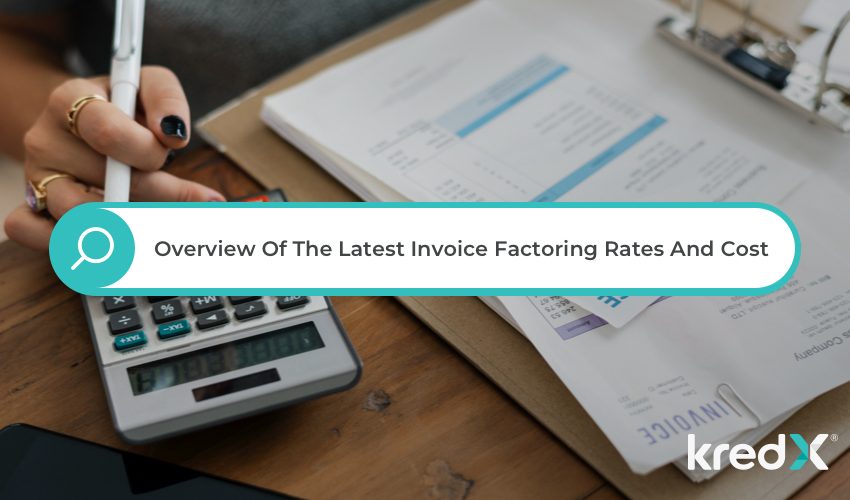
An Overview Of The Latest Invoice Factoring Rates And Cost
Invoice factoring is an effective invoice financing service that allows business bodies to leverage all unsettled bills and access external funding before the due date of the receipt, helping companies or firms to meet short-term financial requirements.
However, before opting for this debtor financing service, business owners must understand the particularities related to this financing facility. For example, KredX and similar businesses, while opting for bill discounting or invoice discounting, generally focus on getting lower invoice rates as it influences the overall factoring costs.
What Are the Factors Affecting Factoring Cost?
Factoring rates are advertised fees charged to businesses while they opt for funding under invoice factoring. On the other hand, factoring cost is the overall expense that businesses must incur while availing of the fund.
Generally, business owners tend to focus on negotiating for a lower factoring rate; however, they must consider the following parameters while evaluating overall cost of borrowing.
Additional Fees
One notable factor that influences total factoring cost is additional fees. The invoice factoring company charges this amount on the invoice factoring rate to manage compulsory services as stated in the agreement. In some scenarios, the finance company claims to charge no additional fees for funding.
However, in such cases, they charge higher factoring rates. As additional fees contribute to invoice factoring costs, hence it must be competitive and justifiable.
Rate Formulas
Some invoice factoring companies levy tiered rates or variable rate formulas based on the time span for which their customers make payments. The longer the time it takes to collect the invoices, the higher will be the cost charged on funding the receivables.
Hence, companies must strive to collect payments within a period that will not affect business courses.
Cash Advance
Business owners seek for maximum cash advancements which they can avail against their factored invoices to meet their working capital requirement. As the amount of cash advance remains higher, the total factoring cost will also increase.
Companies must also ensure that they are getting tiered discounts. Leading factoring companies will extend affordable factoring rates depending on their existing volume. However, as the proportions of factored invoices level up, companies will get tiered discounts.
To put it in simple words, the more companies factor, the less it will cost them to fund their receivables. Out of many aspects, the factoring rate is a parameter that impacts total factoring cost significantly.
The factoring rate charged to companies differs based on industry, advance rates, risk, transaction workload etc. Factoring rate varies across different industries like healthcare, staffing, wellness, retail and wholesale, transportation etc. The rate revolves around 1% to 6.0%.
Factoring rates not only depend on the amount of time an invoice is not collected but also on debtors’ credit quality. Gaining deep insight into factoring costs and rates will help business owners make an informed decision. In addition, it will enable them to acquire necessary working capital for carrying out their daily business operations and save on the total factoring cost.
In this regard, companies can use the working capital formula to get a clear idea regarding monetary requirements.
Bottom Line
Though advertised factoring rates may seem lucrative, there are other criteria that impact factoring costs. When business owners opt for platforms like KredX, an invoice factoring and invoice discounting company, they must look beyond fetching competitive factoring rates, such as features, advance rates, services etc.



